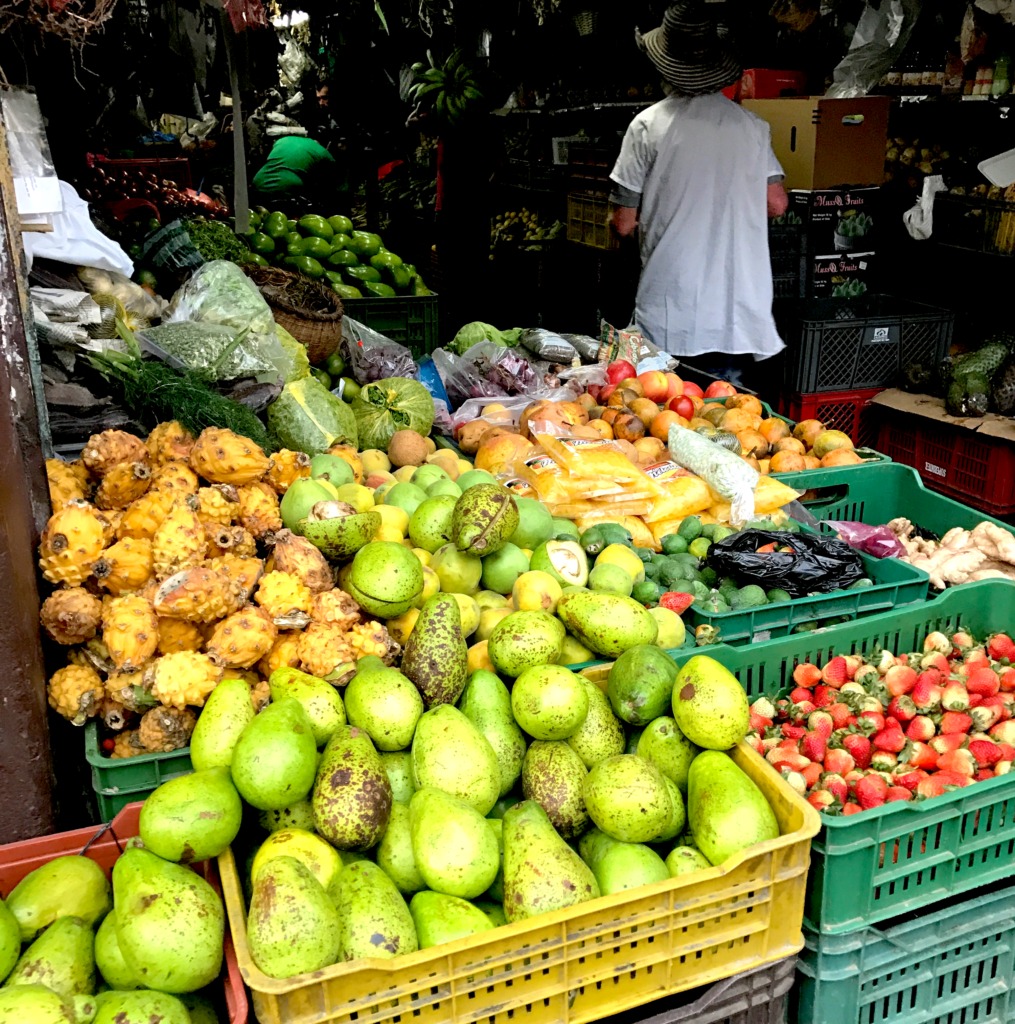As a Guerrilla Grafter I traveled to Colombia to facilitate a discussion on how specific cultivation practices can resist capitalist regimes of sterility and control, to present how to graft urban fruit trees, and to teach participants how to employ their internet tools and different kinds of tagging — from graffiti to electronics — to attach to branches (disseminating information about the graft to humans and bees), and to offer take-home grafting kits. This was for the International Symposium on Electronics Arts in Manizales. The theme for 2017 is “Bio-Creation and Peace”.
I also gave an Artist Talk, entitled Conflict, Collapse and Care: Co-creating NatureCulture in the 21st-century, where I talked about the Guerrilla Grafters, the Coastal Reading Group, Hayes Valley Farm, and my concerns as a solo practitioner around totalizing views of systems vs. local, intersubjective exchanges and cultivations with the non-human.

The Guerrilla Grafters have special resonance in cities where sterile trees line the streets, primarily sites of late capitalism, where historical natures are appropriated in such a way so as to constrain the co-production of viable resources both to humans and to plants and critters; where ornamentality is produced to support property. This kind of ornamentality supports the classist practice of looking, but not seeing, and certainly not engaging. It was unclear to me how much these practices resonated with my new Colombian friends, and what kinds of living, lived and yet-to-live alliances across difference must be made to support resistance to capitalism, or better yet, to co-produce multi-species alliances that topple it. It has always been Guerrilla Grafter’s aim to “undo capitalist civilization one branch at a time”; but of course these fertile branches loaded with viable pollen are meant to be one step in the introduction of new relationships and new life in the urban environment.

In Manizales, there are many fruit trees all around the city, fruit flows through the streets, and is sold ad hoc on street corners. There is an abundance of papaya, mango, banana, guayaba, …. The Cecropia tetealba, a very close relative of Nettles, makes an edible fruit, while also restoring ecosystems, and offering powerful medicine. Black walnuts fall everywhere, and of course Manizales is located at the north tip of the coffee axis. The danger to Colombia is a continued cheapening…. a production of landscape that masks the knowledge systems that “make cheap”, and the scarcity that occurs on gentrifying, city streets.
What kinds of multi-species resistances, or revolutionary ecologies can manifest in Colombia and how can we form alliances from the sterile cities of the US?
In Colombia: Conflict Collapse and Care / Natural Resistance
As a Guerrilla Grafter I traveled to Colombia to facilitate a discussion on how specific cultivation practices can resist capitalist regimes of sterility and control, to present how to graft urban fruit trees, and to teach participants how to employ their internet tools and different kinds of tagging — from graffiti to electronics — to attach to branches (disseminating information about the graft to humans and bees), and to offer take-home grafting kits. This was for the International Symposium on Electronics Arts in Manizales. The theme for 2017 is “Bio-Creation and Peace”.
I also gave an Artist Talk, entitled Conflict, Collapse and Care: Co-creating NatureCulture in the 21st-century, where I talked about the Guerrilla Grafters, the Coastal Reading Group, Hayes Valley Farm, and my concerns as a solo practitioner around totalizing views of systems vs. local, intersubjective exchanges and cultivations with the non-human.
The Guerrilla Grafters have special resonance in cities where sterile trees line the streets, primarily sites of late capitalism, where historical natures are appropriated in such a way so as to constrain the co-production of viable resources both to humans and to plants and critters; where ornamentality is produced to support property. This kind of ornamentality supports the classist practice of looking, but not seeing, and certainly not engaging. It was unclear to me how much these practices resonated with my new Colombian friends, and what kinds of living, lived and yet-to-live alliances across difference must be made to support resistance to capitalism, or better yet, to co-produce multi-species alliances that topple it. It has always been Guerrilla Grafter’s aim to “undo capitalist civilization one branch at a time”; but of course these fertile branches loaded with viable pollen are meant to be one step in the introduction of new relationships and new life in the urban environment.
In Manizales, there are many fruit trees all around the city, fruit flows through the streets, and is sold ad hoc on street corners. There is an abundance of papaya, mango, banana, guayaba, …. The Cecropia tetealba, a very close relative of Nettles, makes an edible fruit, while also restoring ecosystems, and offering powerful medicine. Black walnuts fall everywhere, and of course Manizales is located at the north tip of the coffee axis. The danger to Colombia is a continued cheapening…. a production of landscape that masks the knowledge systems that “make cheap”, and the scarcity that occurs on gentrifying, city streets.
What kinds of multi-species resistances, or revolutionary ecologies can manifest in Colombia and how can we form alliances from the sterile cities of the US?